-
Posts
37,348 -
Joined
-
Last visited
-
Days Won
5
Content Type
Events
Forums
Downloads
Quizzes
Gallery
Blogs
Everything posted by CharlieH
-
Gold prices have soared to a new record, hitting $3,357.40 (£2,540) per ounce, as investors seek safety amid US-China trade war tensions. The precious metal has surged by about 30% since the year began, reflecting growing economic uncertainty. Federal Reserve Chair Jerome Powell warned of slower US growth and rising consumer prices due to Trump's tariffs. His comments follow market turmoil from new import taxes and escalating trade tensions between the two giants. Experts describe gold as being in "full lifeboat mode" as faith in politically influenced assets dwindles. The rally compares to the Iranian Revolution era when prices skyrocketed. Investors see gold as a hedge against inflation and government unpredictability, spurred by Trump's aggressive tariff policies. The US has imposed hefty tariffs on China, prompting retaliations, and there's growing unease over potential new tariffs on other nations. The administration claims these measures will boost US manufacturing, job creation, and tax revenue, yet fears of inflation persist, driving investors to gold as a safe haven. Based on a BBC Article
-
If you want to eat something that resembles a discarded flip-flop go for it !😀 You get what you pay for in this life. 399 for quality is a great price!
-
Fitness First Thailand, ICONSIAM, and Les Mills Asia Pacific are joining forces to host The Ultimate Fitness Force 2025 (TUFF 2025), Asia's largest international group fitness festival. Set to take place from June 7 to 8, 2025, at the iconic TRUE ICON HALL in ICONSIAM, the event is expected to draw over 8,000 fitness enthusiasts from around the world in a bid to position Bangkok as a hub for fitness and wellness tourism. TUFF 2025 is a celebration of fitness culture and the synergy between exercise, lifestyle, and wellness tourism. According to Orawan Kleawpatinon, Head of Marketing at Evolution Wellness (Thailand), TUFF 2025 is designed to meet the growing global demand for fitness experiences that go beyond the gym. ICONSIAM, known for its world-class riverside destination status, will play a pivotal role in making TUFF 2025 an unforgettable fitness festival. Pairach Visessiriluk, Head of Tenant and Customer Experience Division at ICONSIAM, sees the event as a perfect way to position Bangkok as a must-visit destination for fitness lovers. AminoVITAL, a leading player in amino acid-based nutrition, has signed on as a key sponsor for TUFF 2025. Benjaphon Limphonyan, Health and Nutrition Section Manager, expressed excitement about introducing their new formula during the event. TUFF 2024 set a new standard in Thailand’s fitness industry, attracting over 4,000 attendees. With the overwhelming success of last year’s event, TUFF 2025 is set to build on that momentum, featuring more classes, a larger venue, and a variety of fitness experiences not available anywhere else. At the heart of TUFF 2025 will be a series of high-energy workouts, led by top global trainers and featuring Les Mills’ world-renowned programmes. Attendees can expect to participate in a selection classes such as BODYPUMP, BODYSTEP, BODYCOMBAT, RPM, BODYJAM, LES MILLS DANCE, BODYBALANCE, and the exciting Les Mills Pilates. A major highlight of TUFF 2025 will be the launch of Les Mills Pilates, aimed at enhancing core strength and body balance. The event will also feature the HYROX Physical Fitness Test, a globally recognised fitness challenge that is perfect for both seasoned athletes and those new to fitness. ICONSIAM, with its location along the Chao Phraya River, offers the perfect venue for this grand fitness event. With its expansive event space and top-notch amenities, it provides a stunning backdrop for TUFF 2025, ensuring that the event will be as visually inspiring as it is physically demanding. Tickets for TUFF 2025 are now available for purchase on Eventpop, starting from March 24. General admission for individual classes is priced at 900 baht per session, with premium add-ons such as fast-track access to front-row training, exclusive meet-and-greet sessions, and limited-edition merchandise available for an enhanced experience. Sponsored - Original article by The Thaiger
-
- 1
-

-
It is no secret that Bangkok is home to a wide range of dining experiences, but only a few capture the joy of food as well as buffets. From premium meats and fresh seafood to local Thai delicacies and international favorites, Bangkok's buffets offer something for everyone. As the city's food scene continues to grow with each passing day, so does its buffet culture, and with Hungry Hub, Thailand’s leading dining platform, reserving a spot and snagging special deals has never been easier. Made alongside Hungry Hub, and ranked in no particular order, here are some of the most beloved buffets in Bangkok. Copper Beyond Buffet Opening Hours: Lunch at 12pm, Evening at 4.30pm and 7pm Locations: The Sense PiNKLAO, Gaysorn Amarin Copper Beyond Buffet is a luxury experience that doesn’t disappoint. This buffet combines international dishes and premium offerings like wagyu beef, seafood, and even caviar. The buffet is split into self-pickup and a la carte stations, and the atmosphere is designed to provide an elegant, Michelin-star-like experience. Known for their truffle soup, boat noodles, and prime rib, Copper Beyond is perfect for a special night out. Hungry Hub Reservation: The Sense branch | Gaysorn Amarin branch Great Harbour International Buffet Opening Hours: Tuesday to Friday: 12pm to 2:30pm & 5pm to 9pm Sunday to Monday: 11am to 2:30pm & 5pm to 9pm Location: ICONSIAM, Charoen Nakhon Road Great Harbour International Buffet brings the finest of both Western and Asian cuisines to the table. Located in ICONSIAM mall, this buffet is especially known for its sushi, seafood, and live cooking stations. With over 100 dishes, you can enjoy grilled meats, teppanyaki, and fresh seafood, all served in a spacious and elegant venue. Hungry Hub Reservation: Great Harbour International Buffet NAMA Japanese and Seafood Buffet Opening Hours: Daily from 11am to 10pm Location: Centara Grand at CentralWorld A must-visit for lovers of Japanese cuisine, NAMA offers an all-you-can-eat buffet featuring sushi, sashimi, tempura, and fresh seafood like oysters, crab, and lobster. Located on the 24th floor of Centara Grand, this buffet offers stunning views of the city and a wide variety of stations, including Teppanyaki and Sashimi. Hungry Hub Reservation: NAMA Japanese and Seafood Buffet The Seafood Cafe & Restaurant Opening Hours: Daily, 11am to 11pm Location: Chinatown, Phadung Dao Road For those craving fresh seafood, The Seafood Cafe & Restaurant in Chinatown is the place to be. Famous for its seafood platters, this buffet offers an abundant selection of fish, clams, prawns, and oysters. Although seafood is the highlight, the menu also includes a variety of other meat and salad dishes, providing a well-rounded experience for diners. Hungry Hub Reservation: The Seafood Cafe & Restaurant Gentle Butcher by Bangkok Butcher Opening Hours: Daily, 11am to 3pm & 5pm to 10pm Location: Sathon Road, Si Lom Offering something unique, Gentle Butcher focuses on premium, farm-to-table meats. The steak buffet here is what stands out, offering both standard and premium dry-aged cuts. The combination of juicy steaks, grilled meats, and an array of sides makes this buffet ideal for meat lovers. Hungry Hub Reservation: Gentle Butcher by Bangkok Butcher Oishi Grand Siam Paragon Opening Hours: Daily, 11am to 10pm Location: Siam Paragon If you're in the mood for a Japanese-style buffet, Oishi Grand at Siam Paragon is a staple. Known for its sushi, sashimi, teppanyaki, and donburi, the Oishi branch is always a reliable and safe option for any Japanese cuisine. The star of their menu is the premium Wagyu beef, served with a touch of truffle salt for a melt-in-your-mouth experience. Hungry Hub Reservation: Oishi Grand Siam Paragon Na Klongwan Vibhavadi 20 Opening Hours: Daily, 11am to 9pm (Thursdays, 11am to 8pm) Location: Vibhavadi Rangsit Road, Chatuchak Na Klongwan Vibhavadi 20 serves an authentic Thai buffet with a focus on southern-style dishes, particularly seafood. From grilled fish to shrimp and mussels, the offerings are fresh and plentiful. With a laid-back atmosphere and an emphasis on high-quality ingredients, it’s a great option for those craving some authentic Thai food. Hungry Hub Reservation: Na Klongwan Vibhavadi 20 Vantage Point Opening Hours: QSNCC branch: Weekdays 5pm to 9pm, Weekends 11am to 2pm & 5pm to 9pm One Bangkok branch: Daily, 10am to 11pm Locations: QSNCC & One Bangkok Vantage Point offers an experience that combines great food with breathtaking view of the skylines of Bangkok. This buffet serves a blend of European and international cuisines, making it a versatile choice for those looking for variety. Whether you’re in the mood for pasta, pizza, or traditional Thai dishes, Vantage Point has something for you. Hungry Hub Reservation: QSNCC branch | One Bangkok branch About Beef Lava Grill Opening Hours: Tuesday to Saturday, 2pm to 9:15pm Location: Ratchadaphisek Road, Bang Sue If you like your meats, About Beef Lava Grill is definitely a must-try. This buffet offers a selection of beef cuts, including ribeye, sirloin, and wagyu. With a strong focus on grilled meats, this restaurant also offers a variety of Japanese dishes and grilled seafood. The atmosphere is lively, making it perfect for an interactive and satisfying buffet experience. Hungry Hub Reservation: About Beef Lava Grill Atrium Restaurant at The Landmark Bangkok Hotel Opening Hours: Daily, 6am to 10:30am, 11:30am to 2:30pm, 6pm to 10pm Location: Sukhumvit Road, Khlong Toei Located in the luxurious Landmark Bangkok Hotel, Atrium Restaurant offers an extensive menu, including international and Thai dishes, as well as freshly made salads, seafood, and desserts. The elegant ambience, combined with the restaurant’s unique art deco design, makes it an ideal spot for any meal throughout the day. Hungry Hub Reservation: Atrium Restaurant, The Landmark Bangkok Hotel Why Buffets are a Favourite? Buffets provide an experience beyond just food.What makes these buffets so popular is not just the variety and quality, but the relaxed and social dining atmosphere they create. It’s a chance to enjoy great food, good company, and vibrant surroundings, all in one place. From luxurious international spreads to authentic Thai dining, there’s no shortage of options. And with Hungry Hub’s easy reservations and special offers, you can enjoy these experiences without the stress of last-minute planning. So next time you're in Bangkok, don’t miss the chance to treat yourself to one of these top-notch buffets; maybe you’ll find your next go-to spot. Sponsored by Hungry Hub - Original article by The Thaiger
-

cost of a wall...
CharlieH replied to 1FinickyOne's topic in Real Estate, Housing, House and Land Ownership
-
Did We Have the Best of It? Reflecting on a Britain That Once Was It’s a question gaining traction across the country: did we have the best of it? Was Britain of the late 70s and 80s—despite the strikes, inflation, and blackouts—a better place to live than the Britain of today? Back then, there was struggle, yes—but there was also unity. The country came together to celebrate the Queen’s Jubilee with street parties. You could speak your mind without a knock at the door. Children roamed the streets safely. Christianity shaped our cultural calendar, from hymns in schools to nativity plays, and no one was arrested for quoting the Bible in public. Now, That Same Country Feels Foreign Fast-forward to today, and it’s a different world. Preaching the Bible in a town centre can lead to arrest for “offensive” speech. Meanwhile, the Islamic call to prayer can be broadcast over a microphone in the high street without challenge. People are noticing. It’s not about religion—it’s about double standards. One set of rules for some, another for everyone else. Two-tier policing has become visible. Social media posts—if they express the “wrong” opinion—can now carry a criminal sentence of up to two years. Law-abiding citizens are being treated like threats, while actual threats are often ignored or excused under the banner of “tolerance.” Taxed, Ignored, and Left Behind While this happens, the British taxpayer is squeezed harder than ever. People who have worked and contributed all their lives are now struggling to heat their homes, feed their families, and keep up with soaring bills. Yet illegal migrants are put up in hotels, given allowances, and provided with legal representation—funded by the very people now struggling to get by. The question many are asking is no longer just “what happened?” but “why is this allowed to continue?” What Did We Lose? Mass immigration has changed the face of Britain. Some welcome that change. Others feel alienated by it—unheard in their own country, told that their concerns are racist, backward, or unimportant. National identity has become a battleground. The Union Jack is controversial. Royal celebrations are met with protests. Even the idea of being proud to be British can get you labelled. So—Did We Have the Best of It? Maybe we did. Maybe the best of Britain was when it still felt like home. One thing is for sure, I'm glad I got out of there when I did, I sure as hell wouldn't want to live there now.
- 110 replies
-
- 36
-

-

-

-

-

-

-

-
"For a long time, Lola Hassid Angel did not want to talk about the horrors of her childhood. Her experiences of the second world war had not been light: by the age of eight, the Holocaust survivor had “reached adulthood”, seen things she should never have seen, heard sounds she should never have heard, and been confronted by terrors she could neither forgive nor forget. Which is why the 80th anniversary of the liberation of Bergen-Belsen by British forces on 15 April 1945 is as much a cause for joy as for the horror to come flooding back." Full article
-
MOVED Mobile devices
-

Opening a bank account
CharlieH replied to Aussie999's topic in Jobs, Economy, Banking, Business, Investments
MOVED to Banking -

Britain is turning RACIST against white people !
CharlieH replied to CharlieH's topic in UK & Europe Topics and Events
BRITAIN LOSING IT IDENTITY....... a4c6a985a2cb38a0db2f170b2ca5dcd0.mp4 -
I said a few years ago when I finally burned the bridges to the UK that the country I was brought up in has disappeared and been consigned to history. Thank God I got out when I did because what it is now and is becoming is not BRITISH! f5acb81b68a420bc4dbb66edb4e2a624.mp4
- 119 replies
-
- 18
-

-

-

-

-

-

-
Toed
-

So you want to live in the rural area about 1 hour of Bangkok
CharlieH replied to camper star's topic in General Topics
Off topic posts removed. -
199 per month, 1000, per 6 month (1 month free+), 2000 per year , (2 month free) That's the general plan; it's still in progress and entirely dependent on the uptake.
-
Key Developments: Zelensky claims 150+ Chinese fighters are serving in Russian ranks, citing captured individuals. Beijing rejects accusations, calling them "baseless" and warning against "irresponsible remarks." Kremlin denies Chinese involvement, emphasizing its "strategic partnership" with China. Captured fighters spark investigation, with Ukraine probing recruitment methods through social media. NATO allies meet in Brussels, discussing troop deployment in Ukraine for future peacekeeping missions. Core Analysis: Ukrainian President Volodymyr Zelensky has accused Russia of systematically recruiting Chinese nationals to fight in its war against Ukraine, escalating tensions with Beijing. On Tuesday, Zelensky announced the capture of two Chinese fighters in Donetsk and claimed intelligence suggests over 150 Chinese citizens are actively serving in Russian military units. “These are not isolated cases but systematic efforts by Russia,” Zelensky stated, sharing a video of an interrogation with one of the captured men. Beijing has dismissed the allegations as “totally unfounded.” Foreign Ministry spokesperson Lin Jian reiterated that China is not a party to the conflict and urged Kyiv to avoid making “irresponsible remarks.” He added, “China has always asked its citizens to stay away from conflict zones and refrain from military involvement.” The Kremlin backed Beijing’s stance, with spokesperson Dmitry Peskov calling Zelensky’s claims “wrong” and affirming that China remains a “strategic partner” and “friend.” Despite these denials, Ukrainian intelligence suggests that Russian recruiters are targeting Chinese nationals through social media platforms. Zelensky emphasized the need to prevent Russia from exploiting such tactics to prolong the war. However, analysts like Keith Kellogg, a former U.S. envoy, remain skeptical, suggesting the captured individuals might be mercenaries or volunteers rather than state-sponsored recruits. “The first report is always wrong,” Kellogg remarked, cautioning against premature conclusions. The controversy adds another layer to China’s complex role in the conflict. While Beijing has maintained a diplomatic partnership with Moscow, it has also sought to position itself as a neutral mediator. Critics argue that China’s actions—such as providing economic support to Russia—undermine its credibility as a peacekeeper. Ukrainian Foreign Minister Andrii Sybiha noted that the involvement of Chinese citizens “calls into question China’s proclaimed neutrality.” Meanwhile, NATO allies convened in Brussels this week to discuss troop deployments in Ukraine for potential peacekeeping operations. British Defense Minister John Healey emphasized the importance of pressuring Putin to end the war, stating, “We must act decisively to bring this conflict to a close.” Why It Matters: The allegations against China complicate its attempts to mediate peace while highlighting Russia’s reliance on foreign recruits amid mounting losses. If proven true, these claims could strain China’s global standing and deepen divisions within the international community over its role in the
-
Thailand’s New Year festival takes over Bangkok from April 13 to 15. With street parades, water fights, and lively music, it's an exhilarating experience for visitors. However, large crowds, traffic, and safety concerns can pose a risk. If you’re planning to visit Bangkok during Songkran, here’s a breakdown of the pros and cons. Pros of Visiting Bangkok During Songkran Cultural Experience Songkran is a wonderful opportunity to immerse yourself in Thai culture. Many people visit iconic temples such as Wat Arun and Wat Pho to participate in traditional rituals, like pouring water over Buddha statues to cleanse away bad luck. Some temples also offer merit-making activities like donating to monks or releasing fish into rivers. The Festive Atmosphere Bangkok truly transforms into one giant celebration during Songkran. The air is filled with live music, and street vendors serve up delicious Thai food and drinks. Areas like Silom and Khao San Road are packed with people enjoying water fights, using water guns, hoses, and buckets. This water play isn’t just for fun—it symbolises a fresh start and washing away the old year. Affordable Travel Options Despite the festival’s popularity, visiting Bangkok during Songkran doesn’t have to be expensive. Booking flights and accommodations in advance can help you secure better prices. Travelling just before or after the main dates (April 13-15) can also save you money. You can find more affordable lodging in less tourist-heavy neighbourhoods, which still keep you close to the festivities. Hostels and guesthouses offer a more local experience and are often much cheaper than hotels in the city centre. Something for Everyone Whether you love music festivals and cultural experiences or just want a more peaceful escape, Songkran in Bangkok has something for everyone. Major music events are plentiful, while quieter experiences are also a great option. Cons of Visiting Bangkok During Songkran Overcrowding A major downside of visiting Bangkok during Songkran is the heavy crowds. Places like Khao San Road and Silom can become extremely packed, especially in the afternoons and evenings. It can be difficult to navigate through the crowds, and the sheer number of people might feel overwhelming. Crowded areas also raise safety concerns, making it challenging for emergency services to reach those in need. The chaos of the crowds can sometimes make it difficult to enjoy the experience as much as you would like. Heat and Discomfort April is one of the hottest months in Bangkok, with temperatures ranging from 30°C to 40°C. The combination of high heat, outdoor water fights, and crowded streets can be exhausting. While the water fights offer some relief, walking around in wet clothes under the sun can be uncomfortable. The heat also increases the risk of dehydration, particularly if people consume alcohol and neglect hydration. Limited Services Many businesses, shops, and restaurants close or adjust their hours during Songkran. This can make it difficult to find food, essential items, or services. Some popular places shut down completely for the festival, while others may only open for limited hours. Convenience stores and pharmacies may also be closed, so it’s a good idea to stock up on essentials beforehand or plan ahead to find open places. Safety Concerns Songkran is known for an increase in road accidents, especially due to drunk driving and reckless behaviour during water fights. Wet roads and traffic congestion exacerbate the risks, particularly involving motorbikes. SafetyWing Insurance for Songkran Travelers SafetyWing provides travel insurance specifically designed for digital nomads, long-term travellers, and those visiting during Songkran. The Nomad Insurance covers medical emergencies, trip interruptions, and more, offering peace of mind throughout the festival. Essential Plan Covers medical care, trip protection, leisure sports, and motor accidents. Affordable, starting at US$56.28 for every 28 days. Ideal for short-term travellers. Complete Plan Offers more extensive coverage, including routine doctor visits, maternity care, and mental health services. Costs US$150.50 per month for long-term travellers. Includes trip cancellations and higher compensation for delays or stolen items. Songkran in Bangkok is an experience like no other, filled with fun, tradition, and vibrant celebrations. While it’s important to prepare for the crowds, heat, and safety risks, with the right precautions and travel insurance like SafetyWing, you can make the most of this unforgettable festival. Click here for more details. Sponsored – Original article by The Thaiger
-
As retirement costs continue to rise in traditional American destinations like Florida, more and more Americans are looking abroad for a more affordable retirement experience. Thailand has become a top choice, offering a lower cost of living, excellent healthcare, and an easygoing lifestyle. With the support of specialized insurance options like Cigna Global, retiring in Thailand has become an increasingly attractive option for American retirees looking for both financial security and a fulfilling lifestyle. The Rising Costs of Florida Retirement Florida has long been known as America’s retirement capital, but in recent years, the cost of living in the Sunshine State has become prohibitive for many retirees. Housing prices have skyrocketed in desirable areas, and property taxes and insurance premiums have followed suit. Healthcare is another major financial strain for retirees. Even with Medicare, out-of-pocket medical expenses can add up, especially when it comes to prescription medications, specialized treatments, and long-term care options. Thailand: A Cost-Effective Option Thailand stands out as an affordable alternative to Florida, offering retirees a chance to live comfortably on a budget. Monthly expenses in Thailand typically range from US$1,000 to US$2,000, a fraction of what retirees would pay for a similar lifestyle in the U.S. Housing in Thailand is considerably more affordable, with a range of options in desirable locations. Whether you're looking for a beachside home, a mountain retreat, or a lively urban setting. Daily living expenses are also much lower in Thailand. Fresh produce, local markets, and public transportation are all more affordable, and dining out—an expensive luxury in the West—becomes an everyday pleasure in Thailand. Healthcare Excellence at a Fraction of the Cost Thailand's healthcare system is internationally recognised for its quality and affordability. Private hospitals in major cities like Bangkok and Chiang Mai offer state-of-the-art facilities and internationally trained physicians. These hospitals cater to expatriates and international patients, with English-speaking staff and familiar standards of care. Cost comparisons: Cardiac Surgery: Cardiac procedures in Thailand cost between US$15,000 and US$35,000. The same surgeries in the United States range dramatically higher, from US$70,000 to US$200,000. Fertility Treatments (IVF): Vitro fertilisation (IVF) is considerably more affordable in Thailand, with costs ranging from US$8,000 to US$13,700. This is notably less expensive than in Western countries, where similar treatments typically exceed US$20,000. Cancer Treatments: The cost of cancer treatment in Thailand varies depending on the specific type of cancer and required procedures, falling within the range of US$2,000 to US$130,900. In contrast, comparable cancer treatments in Western nations often surpass US$100,000. Diagnostic Imaging (MRI): Obtaining an MRI scan in Thailand averages around US$190. The average cost for the same procedure in the United States is approximately US$2,611. General Healthcare Services: Overall, medical care in Thailand is typically 50 to 75% more affordable than in countries like the United States or Australia. Medication Costs: Prescription medications in Thailand are often much cheaper than in Western countries. This is attributed to local manufacturing and government price controls. Visa Options Made Simple Thailand generally offers straightforward visa options for retirees, making relocation relatively easy compared to other countries. Retirement visas require a minimum bank deposit or pension income, but they grant a more flexible stay compared to other tourist options. For those seeking long-term residency, the Non-Immigrant O-X visa offers a ten-year stay. Health insurance is a mandatory requirement for these visas. Cigna Global's plans meet these visa requirements, offering retirees peace of mind as they navigate the relocation process. Expatriate Communities Concerns about isolation are common among those considering retirement abroad, but Thailand’s established expatriate communities offer a solution. Cities like Chiang Mai, Phuket, and Hua Hin, as well as parts of Bangkok, are home to thriving expat populations. Expat groups offer opportunities to connect with fellow retirees, share experiences, and find helpful resources. The strong sense of community in Thailand ensures that retirees never feel isolated. Cigna: Health Insurance Solutions for Retirees American retirees moving to Thailand must secure health insurance coverage, as Medicare typically does not cover international care. Fortunately, providers like Cigna Global offer specialised health insurance plans designed for expatriates in Thailand. Cigna offers: Hospital stays: Coverage up to US$1,000,000 annually for major health conditions Doctor visits: Up to US$25,000 per year for check-ups and specialist care Chronic illness care: Full coverage for long-term treatments Emergency evacuation: Global emergency assistance included Preventive care: Screenings, vaccinations, and routine check-ups to detect and manage health issues early Custom add-ons: Optional coverage for dental, vision, or maternity care Cigna simplifies the healthcare experience, ensuring that retirees can access the care they need without the burden of upfront payments. As more retirees discover the benefits of retiring in Thailand, the expatriate community continues to grow, offering additional resources and support for newcomers. With affordable living as a main allure, Thailand is an ideal destination for those looking to make the most of their retirement years. Sponsored - Original article by The Thaiger
-

IRS to Lose Billions in Revenue If Migrants Stop Filing Taxes
CharlieH replied to placeholder's topic in Political Soapbox
Post removed. A person's nationality is not relevant. STOP trolling ! -
Jukebox
-

American Man Found Dead in Apparent Suicide in Phuket Home
CharlieH replied to snoop1130's topic in Phuket News
Posted on behalf of @LivinginKata May MARTIN NEAL GREGORY rest in peace. I first met him when he arrived in Phuket some 25 years ago when he arrived in Phuket and rented a home from our company, and where he died. He was a quiet American, fit man who went to the gym every morning. Early to bed, no smoking or drinking, and no drugs AFAIK. No live-in lady or companion. A very good tenant, and my wife and I are shocked to hear about his demise. God Rest His Soul. -
Thonglor is not just a hotspot for brunches, bars, and late-night dancing—it’s also home to some of the best cannabis dispensaries in Bangkok. Whether you’re a seasoned enthusiast or new to the scene, Thonglor’s dispensaries offer a wide range of high-quality products in laid-back, stylish settings. Here’s a list of the top spots to explore for your next cannabis adventure in one of Bangkok’s most lively neighborhoods. 1. Stoned & Co Opening Hours: Sunday to Thursday: 10am to 2am, Friday to Saturday: 10am to 3am Location: Stoned & Co., 13, Seenspace Thonglor, 2nd Floor, 251/1 Thonglor, Khlong Tan Nuea, Watthana, Bangkok 10110 Contact: Facebook | Instagram | Line | Website Stoned & Co offers more than just cannabis; it feels more like a members-only lounge vibe that combines high-end strains with streetwear culture. Located on the second floor of Seenspace Thonglor, this dispensary is known for its exclusive products and sleek design. With a variety of flowers, CBD and THC products, and top-tier accessories, you can expect an elevated experience, whether you’re stopping by after a night out or looking to spend the day. Plus, the trendy merch is a must-see, making it perfect for a souvenir. 2. Four Twenty Opening Hours: Daily, 10am to 2am Location: Four Twenty Dispensary - Thonglor, Major Tower, Soi Thonglor 10, Khwaeng Khlong Tan Nuea, Khlong Toei, Bangkok 10110 Contact: Instagram | Facebook | Website As a fan favorite, Four Twenty stands out with its futuristic design and wide variety of cannabis products. This dispensary offers a selection of flowers, edibles, and accessories, with each jar displayed like a work of art. The staff is always ready to guide you through the options, making it an ideal stop for both novices and experienced users. The sci-fi-inspired interior adds to the cool vibe, making your visit feel like stepping into another world. 3. Trippy Nation Opening Hours: 24 Hours Location: Trippy Nation Dispensary - Thonglor, 999 Sukhumvit Rd, Khwaeng Khlong Tan Nuea, Watthana, Bangkok 1011 Contact: Instagram | Facebook Trippy Nation nails the essentials. With a mix of white furniture and pops of orange and purple, this dispensary feels just like home. The atmosphere is laid-back and welcoming, with an emphasis on great product selection and community. Their special local strain, Oklahoma Coma, is a must-try, and the in-house baked goods are legendary. The lounge area makes it a great place to relax and meet new people, often hosting fun events and sports nights. 4. Choo Choo Hemp Weed S Opening Hours: Daily, 10am to 1am Location: Choo Choo Hemp Weed Shop, 108/4-5 Sukhumvit 49 Watthana district, Khlong Tan Nuea, sub district, Bangkok 10110 Contact: Instagram | Facebook | Website Choo Choo Hemp Weed Shop feels personal and authentic, thanks to its grower-owned ethos. With over a hundred strains to choose from, you’ll find everything from indoor exotics to local favorites. The space is earthy and warm, creating an inviting atmosphere for browsing and relaxing. As a plus, the knowledgeable staff makes shopping here easy, ensuring you feel informed and confident with your purchase. Don’t forget to try their edibles, drinks, and other accessories. 5. Bang Flora Dispensary Opening Hours: Daily, 1pm to 3am Location: Bang Flora Dispensary, 113, 3 Soi Thong Lo 10, Khlong Tan Nuea, Watthana, Bangkok 10110 Contact: Instagram | LINE | Website Bang Flora is a newer addition to the Thonglor scene, but it’s already making waves. With a background rooted in Humboldt, California, their team knows cannabis inside and out. They grow their products locally using sustainable methods, offering flowers, edibles, and concentrates. The dispensary’s clean, providing a calm space to browse, and the friendly staff adds to the overall welcoming vibe. This summer, they’ll launch Bangkok’s first true cannabis-friendly rooftop bar—definitely something to look forward to. 6. Medlab Dispensary Opening Hours: Monday to Saturday, 3pm to 2am Location: Medlab Dispensary, 53 Waterford Pk Aly, Khlong Tan Nuea, Watthana, Bangkok 10110 Contact: +66 96 731 0850 Medlab Dispensary is hard to miss with its bold red exterior, and the inside doesn’t disappoint. The display is simple yet elegant, with flowers showcased like tiny masterpieces. The staff at Medlab are approachable and never rush you, ensuring a pleasant shopping experience. If you’re in the mood for something sweet, their infused cookies are a must-try—soft, buttery, and absolutely delicious. 7. Bong Party x Bangkok Exotics Opening Hours: Daily, 10am to 2am Location: Bong Party x Bangkok Exotics, Ramen Tenyo, 2nd Floor 56/8 Thonglor, Khlong Tan Nuea, Watthana, Bangkok 10110 Contact: Facebook If you’re not expecting a cannabis shop above a ramen joint, you’ll be pleasantly surprised. Bong Party x Bangkok Exotics offers a stylish environment filled with high-quality cannabis products. With colorful jars of flowers, unique bongs, and a selection of accessories, this place is the definition of charming. The staff is attentive and friendly, ready to guide you through their premium offerings. It’s a relaxed spot to enjoy the vibe and discover new products. 8. Marley's Bar and Café Opening Hours: Daily, 12pm to 3am Location Marley's Bar and Café, 440 6 Thonglor, Khlong Tan Nuea, Watthana, Bangkok 10110, Thailand Contact: Instagram | Facebook Marley’s Bar and Café offers a fun, playful atmosphere with everything you need for a memorable experience. With five floors packed with activities—from pool tables to PS5 gaming and vintage arcade machines—it’s a space that never runs out of things to do. But the real highlight is the quality cannabis they offer, displayed beautifully and well cared for. The staff is knowledgeable and friendly, ensuring you have a five-star experience every time. 9. Green Lab Thonglor Opening Hours: Monday, 12pm to 12am; Tuesday to Friday, 10am to 12am; Saturday and Sunday, 10am to 10pm Location: Green Lab Thonglor, 63 Room A5, Civic Park Building, Subdistrict, 13 Thonglor, Khlong Tan Nuea, Watthana, Bangkok 10110 Contact: Instagram | Facebook | Website Green Lab Thonglor is a medical cannabis expert that has quickly raised the bar for the cannabis scene in Bangkok. Their premium flower, edibles, and accessories are all hand-selected, and the staff’s approach is refreshingly humble and helpful. Green Lab makes it easy to access quality cannabis products, with convenient parking and express delivery options to make your experience even smoother. 10. Eden Dispensary & Cafe Opening Hours: Monday to Friday, 10am to 8pm; Saturday and Sunday, 12pm to 8pm Location: Eden Dispensary & Cafe - Thonglor, 106, 1 Sukhumvit 49, Khlong Tan Nuea, Watthana, Bangkok 10110 Contact: +66 83 530 9239 Eden Dispensary & Café is the perfect spot for those who want to unwind in a relaxed, comfortable space. With a cozy, pet-friendly garden and knowledgeable staff, you’ll feel right at home. Their selection of exclusive cannabis strains guarantees a high-quality experience, and the café offers drinks infused with CBD oil for a refreshing twist. Thonglor’s cannabis scene is diverse and always welcoming. Whether you’re looking for high-quality strains, friendly service, or a community vibe, these dispensaries offer something for everyone. Sponsored – Original article by The Thaiger tic s
-
Families today think differently when it comes to finding the right place to live. The decision is no longer based only on house size or scenic views. Families now care more about safety, good schools, strong communities, and healthy lifestyles. A home is the foundation for everyday life. It shapes childhood memories, school routines, and lifelong relationships. The best homes are those where children grow up feeling secure, supported, and happy. More than a holiday destination Phuket has transformed into a year-round family destination, offering both modern conveniences and natural beauty. The island now boasts international schools, healthcare facilities, wellness centres, shopping hubs, and recreational spaces—all within easy reach. In particular, areas like Bang Tao, Cherngtalay, and Bang Jo are becoming top choices for families seeking quiet, green environments near the beach, along with excellent infrastructure and services. The short travel times to everything families need make it a prime location for everyday living. Education as a top priority For many parents, the biggest reason to move is to give children a better education. Being close to a good school makes daily life easier — shorter drives, better routines, and more time at home. HeadStart International School, located in Cherngtalay, is a leading international school on the island. HeadStart offers the British curriculum from preschool to Year 13 with a strong focus on academic results and student well-being. It’s one of Phuket’s most respected schools, and because of high demand, waiting lists are common. A growing community The neighborhood around HeadStart is filled with like-minded families who value education, safety, and a balanced lifestyle. Many are professionals or business owners, and many have relocated from abroad in search of a secure, community-driven environment. Living close to the school means easy access to cafes, shops, parks, and clinics, helping parents build a local support network while children can form lasting friendships. Homes in the heart of Bang Tao Manor Phuket Located just a 6-minute drive from HeadStart, Manor Phuket is a private villa development designed with families in mind. This peaceful community offers something truly special—exclusive priority access to HeadStart International School with no waiting list. Manor Phuket is a rare opportunity in Phuket, offering peace of mind for families looking to simplify school enrolment. The development will feature 100 villas spread across 30,000 square metres, ensuring privacy and space. Each villa boasts a private garden, modern architecture, and open living areas—ideal for family life. Additionally, Manor Phuket provides a dedicated school bus service to HeadStart, ensuring safe, convenient school runs. The community also includes lifestyle amenities such as a gym, spa, restaurant, co-working spaces, and playgrounds—everything a family needs to live comfortably and conveniently. Clover Residence: A proven success near the school Just 200 metres from HeadStart, Clover Residence offers 76 family-focused villas with private pools and tropical gardens. Designed with modern interiors and an open-plan layout, these homes are perfect for young families. Clover Residence has built a solid reputation as one of the top villa projects in the area, with most homes already sold out due to high demand. Its proximity to HeadStart, shops, and recreational facilities makes Clover Residence a top choice for families who want convenience and quality in their living space. A smart investment in your family’s future Bang Tao is quickly becoming the first area in Phuket to offer all the essential infrastructure needed for family life, all in one place. This includes international schools like HeadStart, modern shopping malls, quality medical clinics, a local immigration office, and recreational parks for children and adults alike. The area is designed to support everyday life while offering plenty of opportunities for recreation, wellness, and outdoor activities. Families can easily manage school runs, work, and daily errands without long drives, making it an ideal place for both living and investing. With a growing international community, this part of Phuket is now one of the smartest places to invest in both lifestyle and property. Choosing the right home is not only about the house itself. It’s also about the life that happens outside— school days, family dinners, weekend walks, and milestones shared. In this corner of Phuket, families can find homes that support every part of that journey. Sponsored - Original article by The Thaiger
-
Key Developments: UN Chief António Guterres condemns Gaza blockade, calling it a "killing field" and urging global action. Aid Crisis Deepens: 25,000 aid trucks blocked, leaving hospitals overwhelmed and bakeries shut down. Death Toll Climbs: 1,449 Palestinians killed since March 18; 58 more in the last 24 hours. Israel Defends Actions: Claims no aid shortage, accusing UN of "spreading slander." UN Agencies Warn of Famine: Health systems on the brink, with food and medical supplies critically low. Core Analysis: The humanitarian crisis in Gaza has reached a breaking point as Israel’s blockade enters its second month. UN Secretary-General António Guterres described the situation as a “killing field,” stating that civilians are trapped in an “endless death loop.” He accused Israel of violating international law by failing to ensure the delivery of food and medical supplies to Gaza’s 2.3 million residents. Israel’s foreign ministry rejected these claims, asserting that “over 25,000 aid trucks entered Gaza during the ceasefire.” Spokesman Oren Marmorstein accused Guterres of ignoring facts and spreading “slander against Israel.” However, UN agencies report that aid deliveries have halted since the blockade resumed on March 2, leaving markets empty and hospitals rationing critical supplies like antibiotics and painkillers. The blockade has exacerbated Gaza’s already dire conditions. According to a joint statement from six UN agencies, “all UN-supported bakeries have closed,” and fresh vegetables are scarce. The World Food Programme revealed that food prices have skyrocketed, with wheat flour costs increasing by over 450%. Hospitals are overwhelmed, forcing doctors to prioritize patients with the best survival chances while others die waiting for care. The renewed conflict has also taken a devastating toll on civilians. Israeli airstrikes killed 58 Palestinians in the last 24 hours alone, including five children in Deir al-Balah. Since March 18, 1,449 Palestinians have died in Israeli attacks, according to Gaza’s health ministry. Israel insists its military targets Hamas militants and denies deliberately attacking civilians. Guterres’ remarks follow a January ceasefire that briefly allowed aid into Gaza and facilitated the release of 33 hostages by Hamas in exchange for nearly 1,900 Palestinian prisoners held by Israel. However, hostilities resumed after Hamas accused Israel of failing to honor its commitments under the truce. Why It Matters: The Gaza blockade is creating conditions that could lead to famine and widespread disease, violating international humanitarian law. With hospitals collapsing and food supplies dwindling, the crisis is becoming a test of global resolve to uphold basic human rights. The UN’s call for urgent action underscores fears that Gaza’s suffering could escalate into one of the worst humanitarian disasters in modern history. Based on an article by BBC 10.04.2025

.webp.99de4f35aecd7ca21ca8d87cad467e7d.webp)
.webp.3c6edb74d9cdc06fd0bd488e0b9c3ff0.webp)
.webp.6bd596a1b004f47440cf78e173b970b0.webp)
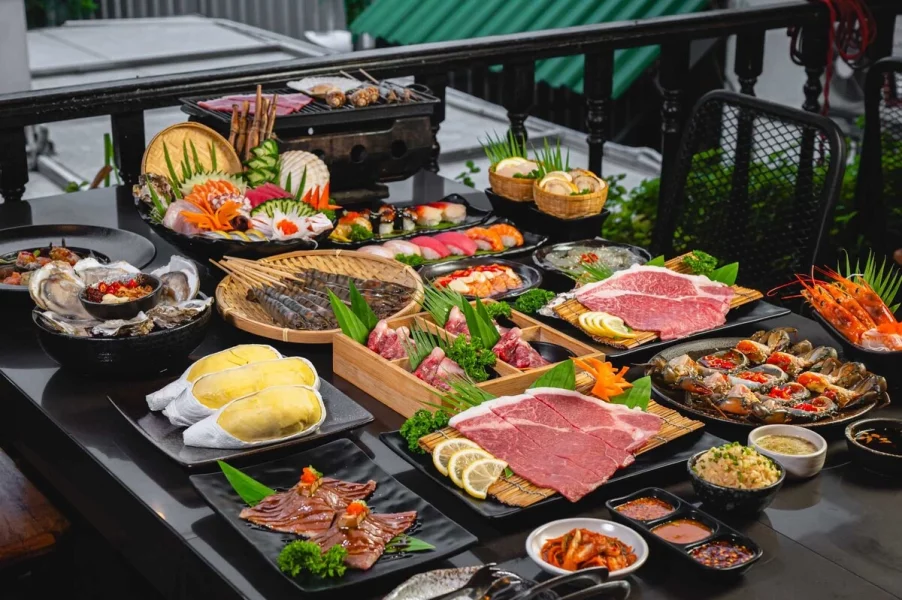


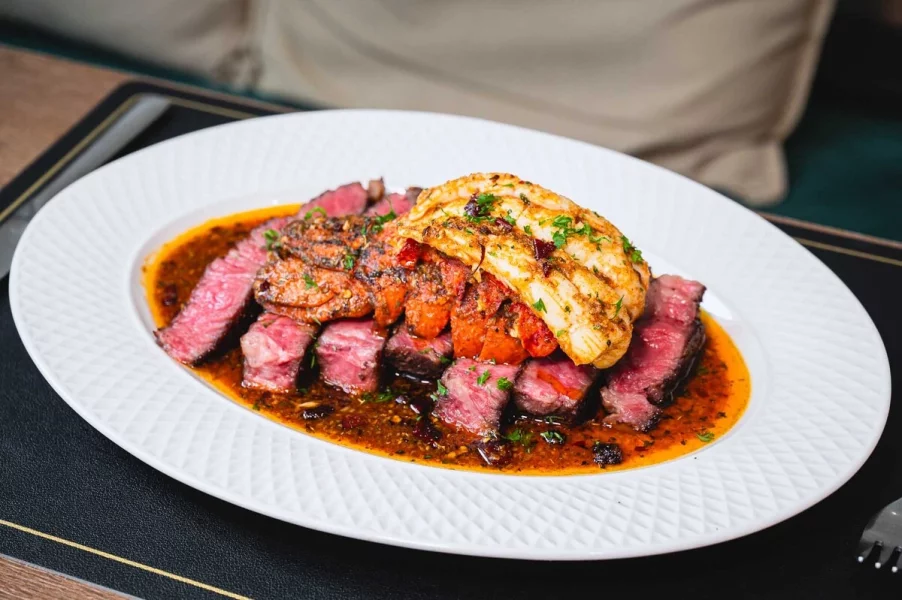



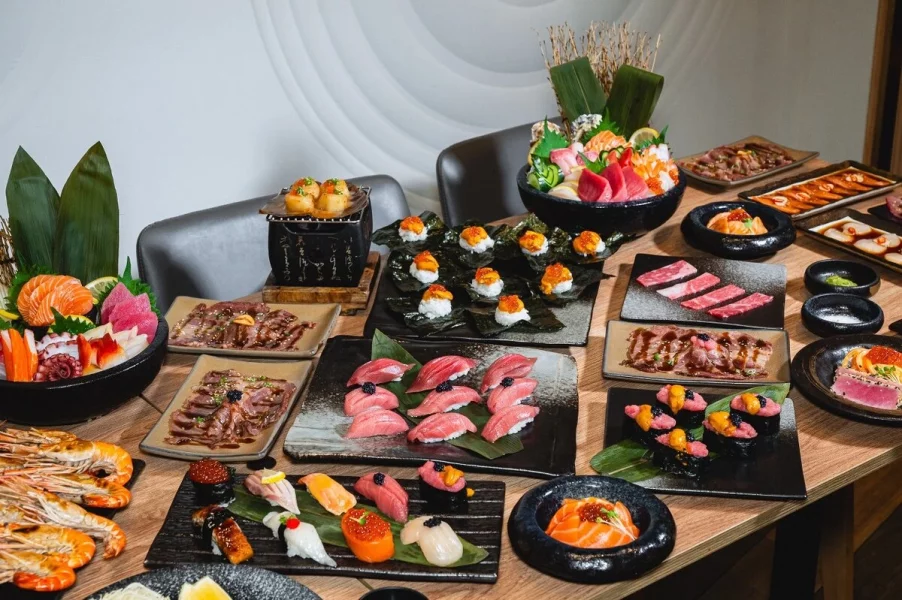
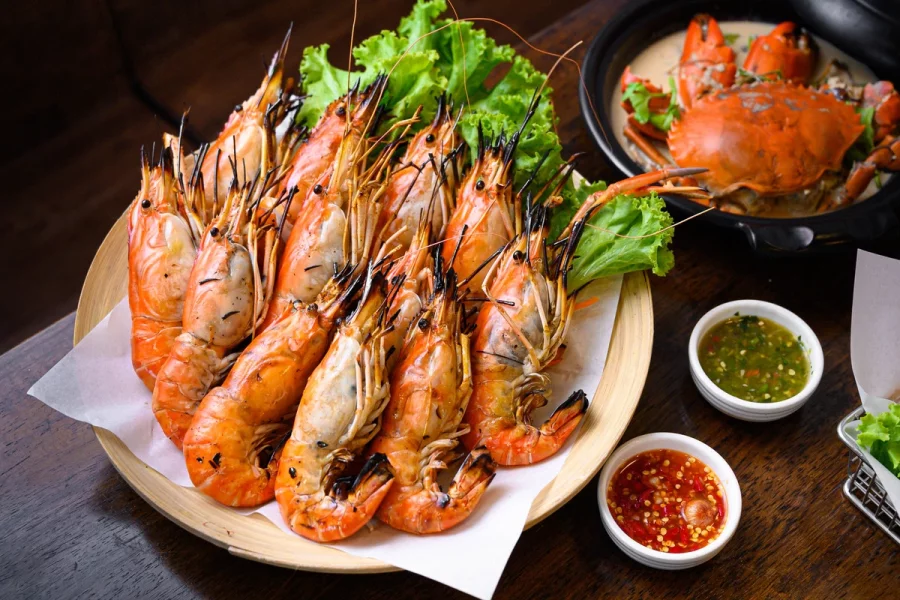
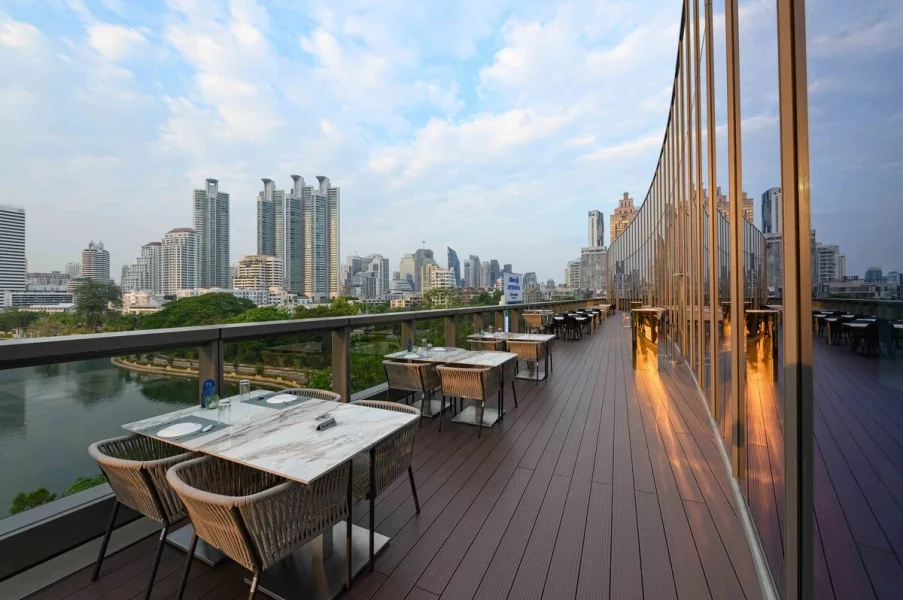
.webp.201d18bed56e9b112bd908d55ae30dd1.webp)

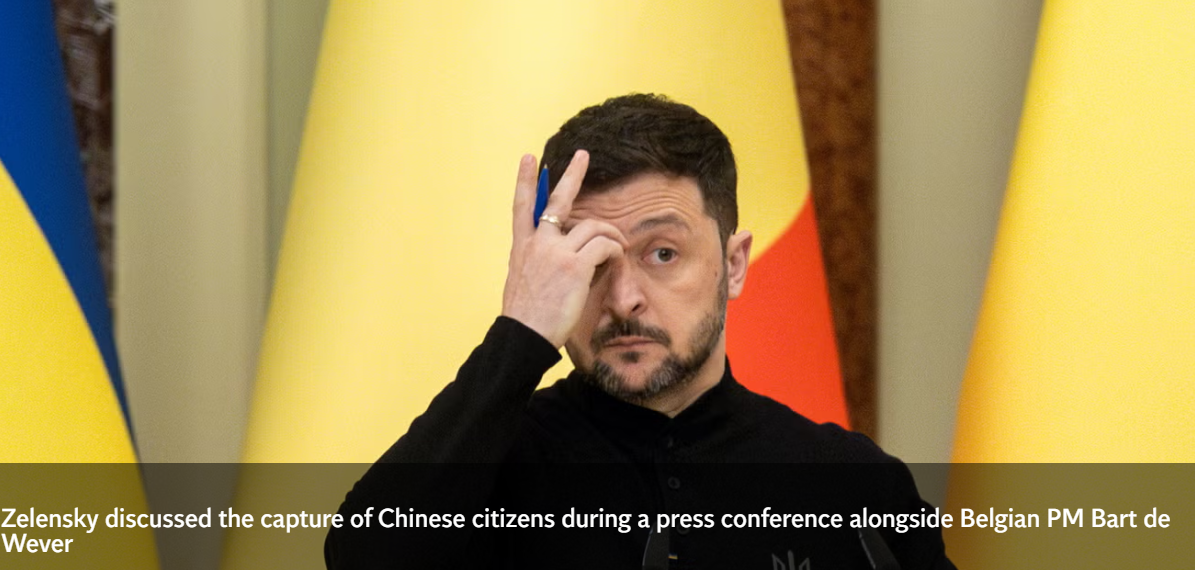
.webp.32c03a394799b945996c388d3c671fcf.webp)
.webp.7f286a8c74ce27d8ef95ba237f4c8f70.webp)
.webp.2c0dae1a9e9029c067a4c3413014b5db.webp)
.webp.8cc8d556305438044fcabf8480fe0da5.webp)
.webp.f82551ca5b0b8cb246d6a4821fd31586.webp)

.webp.c059e571c4f57230a0bca93cc5af5a2d.webp)
.webp.42e17265e833e280373ddeaa87a240c3.webp)
.webp.390764cbd3c45926c4425bf5fb908106.webp)
.webp.706bb38e7d25db742c8cb4dfc42732f9.webp)
.webp.121ae6040ee8b74eeab5a7357d503cbe.webp)
.webp.56c4f18a639601103bb23d39191f09fc.webp)
.webp.a2025965f78544380204ceaf653f342f.webp)
.webp.4a33db17697a6d59f0c2345d352ed719.webp)
.webp.dd25688499449ea0985946762451c953.webp)
.webp.303a33d599883c96d803cfd61d3acbcb.webp)
.webp.7237217a56e339efa67cbfdee5449721.webp)
